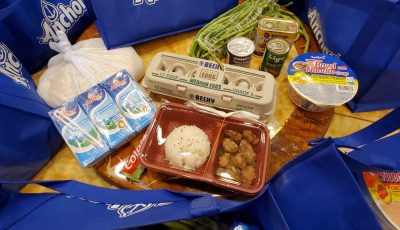A turkey to roast
Turkey is an ancient name for a region that was part of the Ottoman Empire, retaining the name for a country to this day. The same word is used on the spread of roasted bird, squatted to grace tables on Harvest Festival in North America, aka Thanksgiving Day (today across the international dateline), a family time for a shared meal among extended families spread out separately in nuclear units.
The turkey was mistaken for the guinea fowl when Europeans encountered the native bird of the Yucatan valley and brought it to Europe. Traders from the Middle East kept bringing a similar looking fowl to England, which earned America’s bird the association with the region in the Dardanelles between the European Aegean and the Asian Black Sea. First referred to as the Turkey bird, it has since been called simply as turkey, with the wattle and snood.
Besides, after Columbus, the Americas were considered part of Asia, until the navigators plying the Straits of Magellan to the Far East confirmed that Native Americans called Indians were not from India, and America was nowhere close to Asia Columbus thought it was, but the bird retained its Middle Eastern name. Turkey came from Asia, the word that to Akkadians meant, “where the sun rises,” the region “not Europe” to Sumerians.
The black-white ethnic divide that bedevils the U.S. arises from ingrained ethnocentricity that considers Caucasian superiority in Europe, flowered with the Aryan supremacy of the Wehrmacht in WWII.
India’s high caste system of Brahmins saw not too long ago a family pour gasoline at night on their low caste neighbors, set fire that killed a three-year-old and 9-month-old sibling while asleep. The predominantly Indo-Aryans in South Asia are definitely turkeys to roast.
But it is the succulent bird that is our focus, mostly the culinary delight it offers with the roasting “sweat” caught as drippings in the saucepan used for basting, or converted into a dipping sauce, to the slicing of the white meat for the head of the table, and the brown meat for the kitchen help in Texas.
I remember my primal spouse who grew up outside of Chicago, older than Hillary by a couple of years but relatively of the same economic and demographic background, who realized that fish does not come filleted from fresh and briny waters but prepared at the factory or the grocery store before being packaged. Where she grew up, food normally came from the pantry or the frozen section of the grocery store, not from the outlying farms where the livestock crow, oink, grunt, baa, bleat, gobble and moo.
Rural Philippines trained me in more basic amenities. In my family, when preparing a live chicken, I was the cold-blooded one to drive the butcher knife on the fowl’s neck while my father and two brothers looked the other way. Berdugo daw ako.
I discovered that the Internet is replete with instructions on how to roast a turkey, but only one or two peripherally mention the preparation of a live one. I was curious because turkeys were not common in the Philippines of my growing up, and we only raised one or two in Northern Luzon for the visiting missionaries, or for sale in the upscale markets of Aparri and Tuguegarao. I was a party to beheadings but was not invited to the carvings!
In the United States, where kind folks invited me for dinner on Thanksgiving Day as a foreign student, I met to-meat-the-turkey again. It was not the turkey at all that was the focus of the day, though the common parlance around the table among the seculars was Turkey Day. It was the conviviality around the meal table that was ritualized with kin relations as the starting definition but not solely since neighbors and friends counted as well.
The White House made a big deal in “pardoning” two turkeys this year. In October, the Justice Department confirmed decongesting the penal system by shortening inmates’ sentences, particularly those incarcerated on drug charges. Thanksgiving Day observes a pardon of sort also. On the day when the fir tree goes up to anticipate the Yuletide season, Christmas to a self-proclaimed Christian nation, a turkey merrily walks away while the partner greases the kitchen oven.
A girl in elementary on verbal conflicts with guys, who contradicted her assertions just to be contrary, walked away in exasperation uttering, “turkeys.” “Turkey” was a word of disgust for those she disliked among the male of the specie. She learned her English very well.
The English of America stayed with us. It is one of the country’s two primary languages. Tagalog adopted into Pilipino after Independence Day elbowed its way to entrenched English that the Thomasite teachers (those who came on the ship Thomas in 1901 to take over the 1863 Spanish public school system) instructed prospective brown Americans on English ways and manners.
Turkeys are carved today in North America. My neighbor in Finasisu raises deer and doe that grunts, and sells birds to hotels. He makes a bundle. He is no turkey!


























